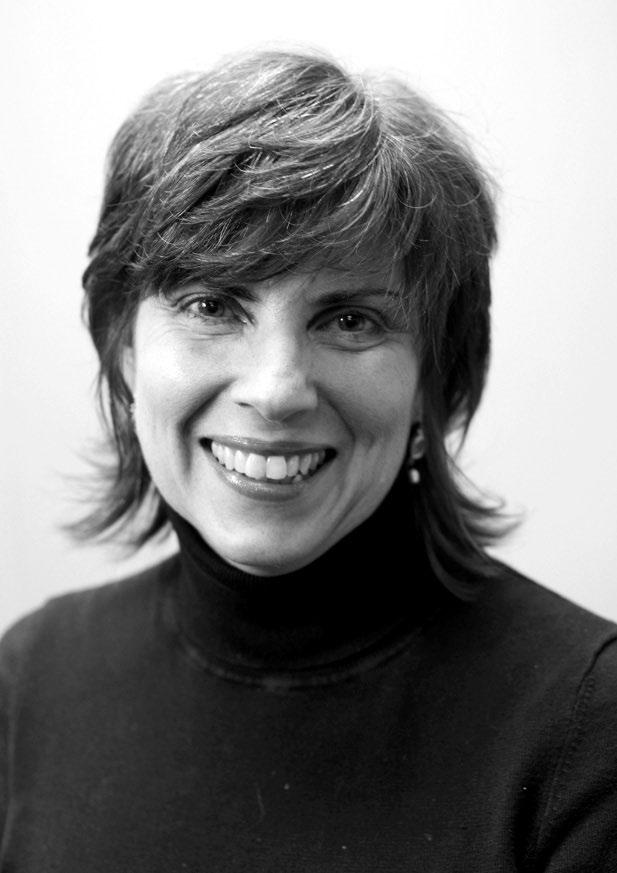At the height of the Cold War, in a world divided by the Berlin Wall, University of Alabama undergraduate student Lane McLelland became fascinated by conflict and social change.
McLelland’s desire to learn more about the morals that drive individuals and community problemsolving defined her career for the next 30 years. Now 52, the New College graduate has moved her focus from international affairs to her alma mater and the Tuscaloosa community.
“It was originally a decision to return to the relationships that meant the most to me,” McLelland said. “Now that I’m here, I believe it has made my work more effective to be from this community and to be someone who genuinely loves it, even as I am working to make changes for the better.”
Apart from teaching classes in ethics and deliberative democracy at UA, McLelland also leads community service projects and moderated discussions, in which participants learn to work together to develop new ways of addressing shared challenges in their communities.
DELIBERATIVE DEMOCRACY
Professor returns to alma mater, bringing career-long commitment to community collaboration
BY ANNA WATERS EDITOR
During the summer of 2012, McLelland led Shape Up Walker County, a community service project, in which students and faculty teamed up to address issues related to nutrition and obesity in Walker County, Alabama. The student group advertised for shopping tours and helped residents learn how to cook healthy meals on a budget and how to plant and tend a garden.
“It’s inspiring to see students work with local nonprofit professionals,” McLelland said. “The organizations get energy and important research from the students to support their efforts, and the students get the chance to learn how to work with real nonprofits to solve real community problems. It’s just a testament to the power of a community that works together.”
Rachel Puckett, a junior at UA majoring in communication studies, worked with McLelland on the
Photo courtesy of Lane McLelland
Walker County project and experienced the dynamic of the endeavor firsthand.
“Shape Up’s success depends on the community’s involvement,” Puckett said. “I think there is power in being able to visibly see a community’s network of citizens, nonprofits, healthcare providers and businesses that are all devoted to bettering others’ lifestyles.”
Another community problem-solving technique McLelland has found useful is deliberative democracy, a process she calls “community group therapy.”
“It’s when people work, step by step, through a problem, but not only in a debate or a dialogue,” McLelland said. “It takes the form of an extended, very intentional discussion, in contrast to a platform for giving simplistic speeches. By not allowing a winlose environment, it gets people to understand the complexity of a problem and explore what they can actually do about it.”
McLelland has received tremendous support for her efforts from New College, Honors College and Student Affairs.
I’VE FOUND THAT WHEN PEOPLE CONNECT, THINGS HAPPEN THAT MAKE CHANGE POSSIBLE.
“Lane McLelland is one of the finest professionals with whom I have had the privilege of working,” University of Alabama Vice President for Student Affairs Mark Nelson said. “Her ability to facilitate meaningful dialogue among disparate groups is remarkable. Lane’s work has literally changed communities and the lives of community members and students in very positive ways.”
McLelland’s passion for community problemsolving and conflict resolution is rooted in her desire for social change.
“I want to build better relationships among people who think they are at odds or don’t normally interact at all,” McLelland said. “I’ve found that when people connect, things happen that make change possible.”
‘BLOOD CLOT’
FROM PAGE 27 >>
didn’t have my wallet,” Thomas said. “By that point, it was day five, and I was still having these headaches. At the insistence of my primary care physician, Dr. Amy Lejeune, I decided to go to urgent care, thinking that they would just give me a migraine cocktail so I could go back to work and then go home.”
Dr. Andrew Allen, the doctor Thomas saw at urgent care, says he could tell something was seriously wrong the moment he walked in.
“Michel said he went to an Alabama football game the weekend before, and it seems like his clot was expanding during that game,” Allen said. “He was complaining of a lot of intermittent headaches and vomiting, which was a red flag for me. Initially, the intensity and localization of those headaches made me concerned about an aneurysm.”
Allen immediately sent Thomas to the emergency room, where a CT scan showed not an aneurysm but a blood clot. That night, Thomas was admitted to the hospital under the care of Dr. Winfield Fisher, a UAB neurosurgeon with whom Thomas worked.
At the hospital, Thomas learned that his most severe headaches and vomiting, as well as his current, persisting symptoms, were due to a brain bleed and a blood clot in his dural venous sinuses, which drain blood from the brain. Intracranial venous sinus thrombosis, as it is called, is a rare disorder that, in this case, was caused by a factor V Leiden deficiency, a hereditary hypercoagulability disorder.
Angiogram images show blood vessels following thrombectomy and treatment with blood thinners. The arrows indicate scattered blood clots present throughout the venous system, which were diminished in size and extent after treatment.
Fisher initially treated Thomas’ blood clots

